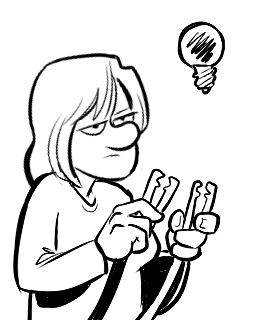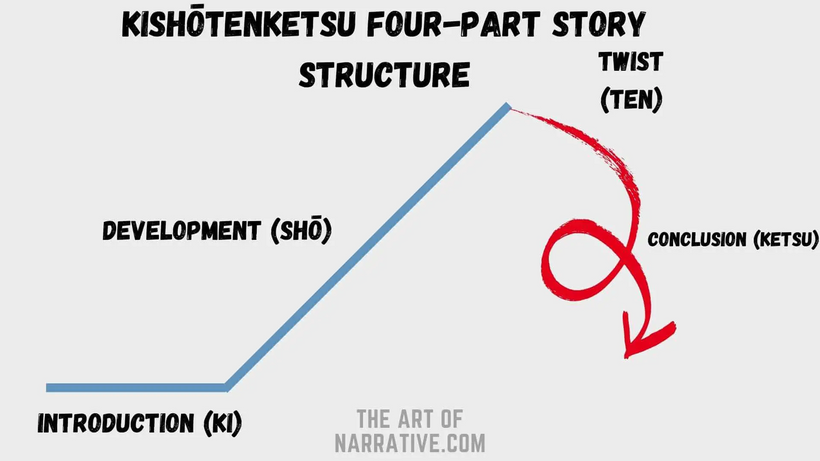I teach a couple of classes at The University of the Arts in Philadelphia. One is a general Storytelling class, and the other uses TV shows to analyze story structure. The classes meet on Mondays, and they’re routinely a highlight of my week. They challenge me to think on my toes, and that’s an exciting, rewarding experience. On some days, a student will ask a question that forces me to rethink everything I thought I knew.
Last Monday was one of those days.

Earlier in the semester, I lectured my Storytelling students on the importance of conflict. Conflict is integral, I told them. Without conflict, a story becomes a grocery list. This led to an examination of how conflict is used to build narrative tension. One student raised his hand.
“But… does a story HAVE to have conflict?”
My gut reaction was to say that, indeed, it did. The student responded that sometimes he felt manipulated by stories that simply dumped conflict into a reader’s lap, expecting a Pavlovian response.
My response was that the student should follow his instinct and challenge himself to write a compelling story without using conflict. I suggested that a great deal could be learned about his concerns by doing precisely that.
As I moved back into my prepared remarks for the day, I felt like I had… failed a little bit. You can usually tell when you’ve connected with a young writer. It’s as if a light turns on behind their eyes. That didn’t happen.

Later, as luck would have it, one of the listeners to my weekly podcast, ComicLab, asked my co-host and me to discuss kishōtenketsu. A writing structure that originated in China — and was embraced enthusiastically by Japanese and Korean writers — kishōtenketsu is a four-act writing archetype that doesn’t place the focus on conflict.

Invigorated, I did a deep dive into kishōtenketsu, learning of its dominance in manga and anime. I saw how Studio Ghibli used it in many of its wonderful feature films. I even learned about Yonkama, a special type of four-panel comic strip built using kishōtenketsu principles. Before long, I had assembled the materials for an hour-long presentation on the subject, complete with video clips, examples, analysis, and suggestions for exploration.

On Monday, I presented that lecture. I opened by recalling that student’s question and admitting that I felt my initial answer wasn’t satisfactory — not to the student and not to me. The young writer expressed amazement that I had even remembered! Giddily, I launched into my lecture. I did a general introduction to the concept, explaining how each syllable of kishōtenketsu represented one of the four acts — ki, shō, ten, and ketsu.
-
Introduction (ki) establishes the main characters and their setting.
-
Development (shō) deepens the reader’s understanding / emotional attachment to characters.
-
Twist (ten) introduces an unexpected and significant change to the setting and to the characters’ lives.
-
Conclusion (ketsu) brings together and reconciles the first two acts with the changes of the third.
I showed video clips of manga artists explaining the concept and using visual examples of how it was implemented in their work. I introduced Yonkama and pulled some charming examples. I did a breakdown of “Kiki’s Delivery Service” and discussed how each plot point fit wonderfully into a kishōtenketsu story structure. Forty minutes, twenty-four slides, a half-dozen comics, and two videos later, I turned breathlessly to this young writer to ask if this time — at long last — this time, I had done a better job of slaking his thirst for knowledge.
He was fast asleep.
Nevertheless, I enjoyed learning about this writing structure. It became a very useful post in The Webcomics Handbook, and we’ll definitely discuss it on ComicLab. I have a lecture I can call upon whenever the subject comes up again. Heck, I might even make it part of the official syllabus next semester. Besides, I’ve fallen asleep in my fair share of classrooms (as a student, of course). And I know from personal experience that I was absorbing a lot more information than it might have seemed at the time — if only by osmosis. There’s still a small chance that some of that information found its way into my student’s psyche. Or maybe another student in the class found it to be a breath-through moment.
That’s the thing about teaching: You can rarely call your shots, you can’t force a student to pay attention, and you feel like some days, everybody would be much happier if you just let them go home. But no classroom experience is ever wasted. Somewhere in that room, a light turned on. Or will be.
And that’s my kishōtenketsu story. Literally and figuratively.
—–
Special Offer
 When these things go ‘bump’ in the night, they mean business!
When these things go ‘bump’ in the night, they mean business!
I combined the last round of Monster Romance bonus cartoons with some of the best monster mashes from EiAD and the commissions — culminating in a fantastic NSFW eComic for my Patreon backers!
-
Existing patrons? If you’re at an NSFW tier, do nothing. You’ll get your download the first week of May.
-
Free members? Upgrade to an NSFW level today! You’ll get instant access to over 1,400 NSFW comics and illustrations. Then, at the beginning of May, you’ll get the special eComic AND LEWDcrate, a 4½-gigabyte digital reward!
Smartphone edition!
This digital reward will be delivered in a special vertical-scroll format optimized for smartphones! This works best when you import it into an eBook app like Apple’s iBooks.
Inside
-
Three EiAD storylines
-
Ten Commissions
-
28 Bonus cartoons